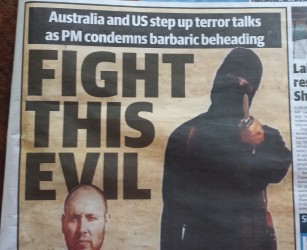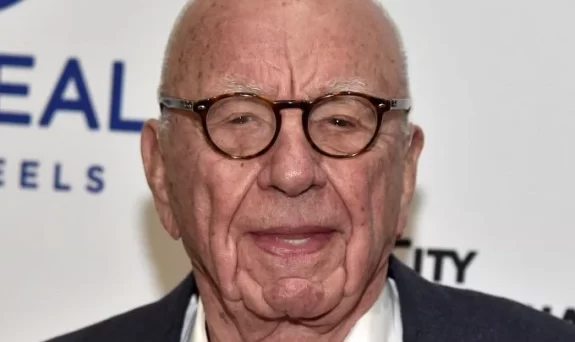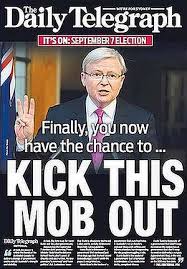Should the media act more responsibly?

By Dave Chadwick
The public’s hunger for every image and piece of information about terrorist acts and mass murders does not always need to be sated. I question the effort of the media to feed this hunger with endless detailed national coverage when an attack occurs. Do they not realise that this is the exact reaction the awful perpetrators are hoping for, or are they so greedy for ratings they do not care? Would a more restrained approach make society even a few percentage points safer?
The valued concept of a free and impartial media to act as the ‘Fourth Estate,’ and hold all three branches of government accountable to their representatives has a long history in democratic theory. The importance of a balanced and independent analysis of national and international affairs is put into stark definition by the blatantly deceptive and obfuscating practices that modern politicians employ. Although its Fourth Estate role is a powerful argument against government interference (which doesn’t seem to bother our current government), it is not a licence for the media to publish and post whatever pleases them. It also charges them with the responsibility of publishing in the public interest.
I’m not an historian or expert in media law, but it seems to me that the media has misinterpreted the idea of public interest. Public interest here does not necessarily mean what the public is interested in – but what is in the public’s interest to know.
What is in the Public Interest?
I could write a whole article about media outlets’ preoccupation with selling us news stories that are really not in our interest, such as what happened on last night’s episode of the Bachelor (which by the way, I really don’t care), instead of giving us a better understanding of ongoing developments in Ukraine or the South China Sea, but I won’t. I am not really arguing against this (doesn’t mean I like it though), as I realise they have to make a commercial decision about what consumers want and some publications are marketed to a particular type of consumer.
My concern is when the media (and with the advent of online technology, all social media users have the potential to become lay-journalists) publish and share information that is actually against the public interest. Whether through greed or naïveté, media users are unthinking accomplices to the aims of terrorist groups and psychopaths with the incredibly detailed coverage they reward them with. If social media users were more discriminating with what they shared and media outlets were more restrained with their coverage, the payoff these groups and individuals get from their atrocities would be reduced, potentially reducing the likelihood of further atrocities. That sounds like something that would definitely be in the public interest to me.
Only recently, a clearly unwell man acted out his rage in a heinous double murder in Virginia and even went to the trouble of videoing it and posting it to social media. The logical inference of such action is that he wanted to share his actions with the world. How did the media and the rest of the world react? Exactly the way he wanted. Television and print media published articles about every aspect of the attack and his life, while the online community was retweeting and sharing his gruesome posts. News articles even provided screenshots and links to his social media page. I actually saw an article in The Herald Sun that published his final social media posts after describing him as a man who wanted his actions and words to go viral. Nice of them to fulfil his dying wishes. To other unwell, lonely, desperate people, what is the message? The more despicable your actions are, the more attention you will receive.
Now I don’t want to imply any less personal responsibility of the perpetrators of disgusting acts like these, but I do wonder what useful function does the saturation media coverage and vapid online sharing of these types of event serve. Would most attacks still take place? Probably, but would all of them? I’m less sure.
When the first of ISIS’s execution videos was released, like most of us I was saddened for the victim and his loved ones. I was also horrified and angered at those who would perpetuate such an atrocity and deliberately seek to use it as a political strategy. These feelings of impotent rage returned each time I saw it on TV news bulletins and heard the audio on radio or saw people sharing the video on social media. That happened an awful lot. It was difficult to avoid for a few days. If the terrorists wanted to bring their message to people around the world, they succeeded. However they only succeeded because they were allowed to.
The public execution was a propaganda strategy that held no tactical value. If no one watched the videos would there be any reason to make them? I would contend not. So why are people in the west so helpful in actually facilitating and encouraging it? I know Tony Abbott liked to see national security headlines on every paper as often as possible, but was it actually in the public interest? It was no surprise to see a string of similar videos released in the following weeks.
What if …
What if a law was passed making it illegal to broadcast or forward any vision or audio these crimes? Or even without legislation, if the media guidelines changed to dramatically reduce the frequency and detail with which they did cover them. Obviously the exception would be for the files to be passed on to DFAT or the AFP so they could take appropriate actions. A short factual, unsensationalised (I know it’s technically not a word, but its meaning is obvious) report detailing the important facts of the story is all that needs to be made public. The public’s fascination with every aspect of this does not have to be fed, just like six-year old’s love of ice cream doesn’t have to be fed. Is there any other reason people really need to see the video? I would argue it is hardly in the public interest and would suggest it is actually against it.
I realise this idea may draw some unflattering Orwellian comparisons from civil libertarians. But is this really a slippery slope to the government-controlled media of 1984 (I’m not talking about an actual year that is the title of a book for those to young to have realised)? I don’t think so. You can use a slippery slope argument to predict pretty much anything, but that doesn’t mean your prediction is correct (as Eric Abetz and Corey Bernadi have shown). Increased government regulation of the media and individuals’ online activities may ring some alarm bells, although I believe there are similar laws about child pornography and although it is a significantly different issue, I haven’t heard any complaints about such laws.
The other argument people may raise is that such a law would make people even more beholden to the media and would prevent independent verification of the reporting of these types of events. It is true to an extent, but seeing the video or reading a mass murderer’s life story (as reported in the media) doesn’t solve that anyway. I would agree the potential for media agencies to shape national dialogue with their reporting of an event is already unsettling, but social media provides a counterpoint to this already. I can’t see this change adding much to this situation as there is still much that can be reported and shared. The videos of 9/11 and the moon landing have not stopped the conspiracy theorists on either subject because some people will believe what they want to believe no matter what evidence is- that is why there are still anti-vaccers and climate change deniers in the world.
Is that the answer?
I do like the concept of an independent, uncensored media, free from government and shareholder interference, but Australia seemed to give that up some time ago. The reality is that a lot of news reporting and commentary is filtered by existing beliefs and assumptions of the commentators, even this one (astonishing I know). I have outlined how I believe current media practices around the reporting of terrorist attacks and mass murders, as well as the unthinking actions of social media users, may play a part helping the perpetrators achieve their goals. Political attacks mean very little when their message is contained, after all. I know it wouldn’t stop such actions, but would it make them less attractive to desperate individuals? I think so. As much as governments are often wary of over regulating the media for fear of public backlash, I think it would at least be worth thinking about and discussing?
What do you think?
This article was originally published as Real Agents of the Fourth Estate or just greedy Real Estate Agents on Quietblog.












